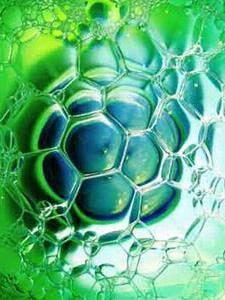Algae may be touted as the next big thing in environmentally friendly fuel, but techniques to work out which algal strains will be best have been lacking - until now
Algal oil is being touted as a hot new source of environmentally friendly fuel, but methods to work out which strains of algae will be best to use are painfully slow and error-prone. Now, researchers in the US are developing an analytical technique to overcome this problem and dramatically reduce the time it takes to strike the algal oil jackpot.
Microalgae contain high levels of lipids and oils that make them of real interest in the hunt for a sustainable feedstock for biodiesel. However, not all lipids are created equal. Only the fatty acids within algal lipids can be converted in biodiesel - and some are better than others. With different algal strains containing different combinations of lipids, a key challenge is identifying the species with the best fatty acid profiles.

’We noticed a big hole in the analytical tools there,’ says Al Darzins, principal group manager at the National Renewable Energy Laboratory in Colorado. ’When people claim all sorts of oil percentages that their algae are producing, we think the chemical methods [the figures are based on] are not very robust.’ On top of this, it can take days to carry out the wet chemistry needed to decipher the lipid profile of a single strain of algae - let alone a whole algal library.
To remedy this, Darzins and his team are applying a technique based on near infrared (NIR) spectroscopy that could slash the time it takes to characterise an algae sample to a matter of minutes.
In order to use the NIR screening technique, the team has to compile a calibration model or library against which samples can be compared. This involves carrying out wet chemistry to initially characterise the lipids within the algae. Different lipids also generate very characteristic and distinct fingerprints in the NIR spectrum, so combining these sets of data helps generate a comprehensive analytical model.
’The preliminary work we have done involves taking some algae biomass and spiking it with a couple of different types of lipid, either triglycerides or phospholipids,’ Darzins explains. ’We’ve then done NIR spectroscopy on those samples and the preliminary models that we’ve developed show that we have a very nice linear correlation [between] the amount of lipid that we added with regards to how much the model is predicting.’
The more samples used to generate the library, the more robust the model becomes. Once scaled up, it could create a rapid screening method that avoids laborious and time consuming wet chemical methods. ’If you wanted to grow a hundred different organisms, doing that lipid analysis by wet chemistry would take months and months, whereas if you can use this [new technique], you can do it in a few minutes,’ says Darzins.
While Darzins admits that doing the wet chemistry needed to generate the model is ’not a trivial matter’, once the data is compiled and made available all researchers would need to do would be the NIR spectroscopy - a matter of a couple of minutes’ work.
Yusuf Chisti, a microalgae biotechnology expert at Massey University in New Zealand, agrees that the current methods used to characterise fatty acids within algae are ’excruciatingly slow’.
’Different lipids certainly have characteristic infrared spectra that may allow quantification of the various kinds of lipids within a dried algal cell,’ says Chisti. ’If this method is shown to work unambiguously, it will greatly facilitate the selection of algae with the specific lipid profiles that are desirable for making biodiesel.’
The approach, he says, will need to be rigorously validated, adding that the expensive equipment required is the technique’s one drawback.
Darzins says the work done so far provides a good proof of concept, and the next step will be to continue adding data from the hundreds of algal strains the group has collected to expand and improve the model. In about a year he hopes that they will have created a workable model that researchers will be able to use, bringing the prospect of a rich algal oil reservoir within reach.
Anna Lewcock






No comments yet